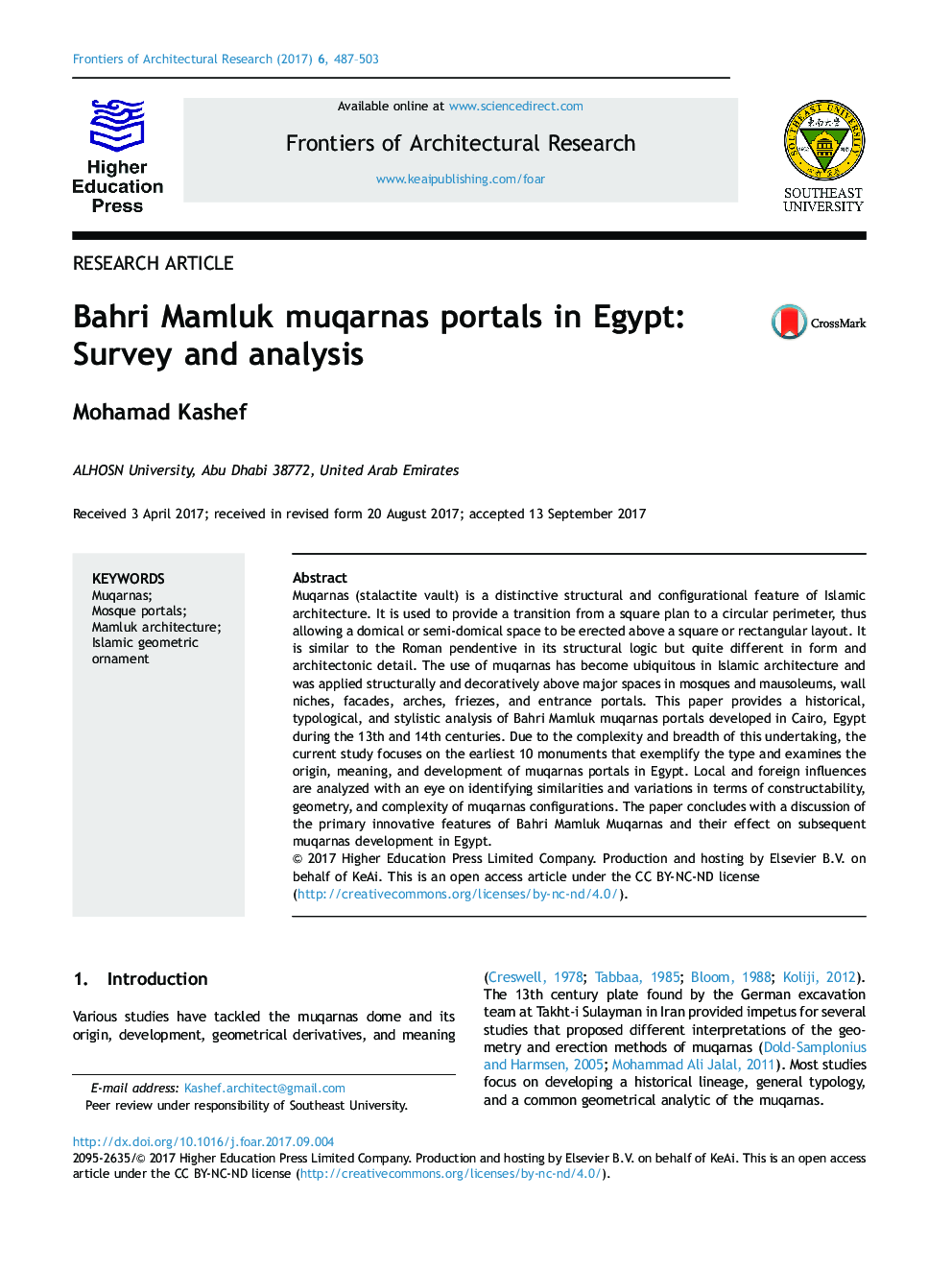| Article ID | Journal | Published Year | Pages | File Type |
|---|---|---|---|---|
| 6742446 | Frontiers of Architectural Research | 2017 | 17 Pages |
Abstract
Muqarnas (stalactite vault) is a distinctive structural and configurational feature of Islamic architecture. It is used to provide a transition from a square plan to a circular perimeter, thus allowing a domical or semi-domical space to be erected above a square or rectangular layout. It is similar to the Roman pendentive in its structural logic but quite different in form and architectonic detail. The use of muqarnas has become ubiquitous in Islamic architecture and was applied structurally and decoratively above major spaces in mosques and mausoleums, wall niches, facades, arches, friezes, and entrance portals. This paper provides a historical, typological, and stylistic analysis of Bahri Mamluk muqarnas portals developed in Cairo, Egypt during the 13th and 14th centuries. Due to the complexity and breadth of this undertaking, the current study focuses on the earliest 10 monuments that exemplify the type and examines the origin, meaning, and development of muqarnas portals in Egypt. Local and foreign influences are analyzed with an eye on identifying similarities and variations in terms of constructability, geometry, and complexity of muqarnas configurations. The paper concludes with a discussion of the primary innovative features of Bahri Mamluk Muqarnas and their effect on subsequent muqarnas development in Egypt.
Related Topics
Physical Sciences and Engineering
Energy
Renewable Energy, Sustainability and the Environment
Authors
Mohamad Kashef,
